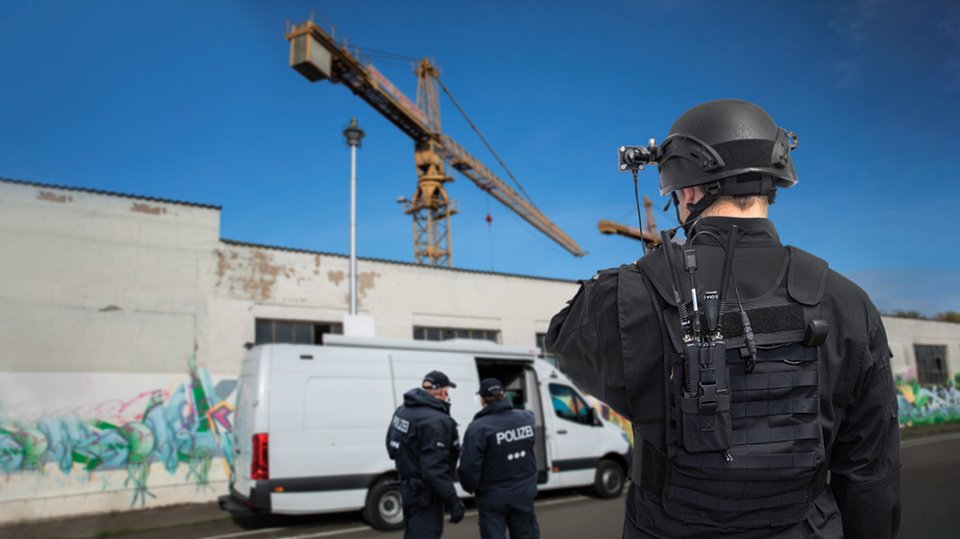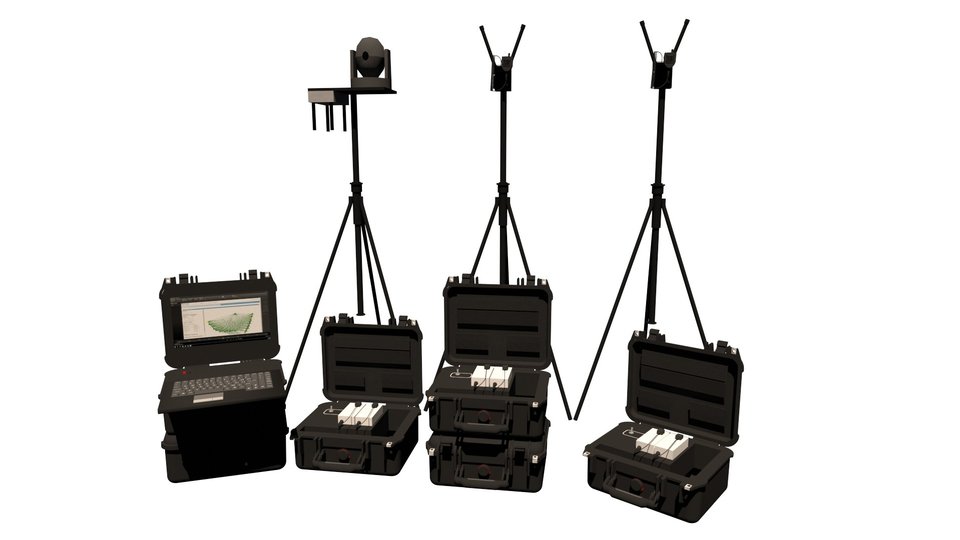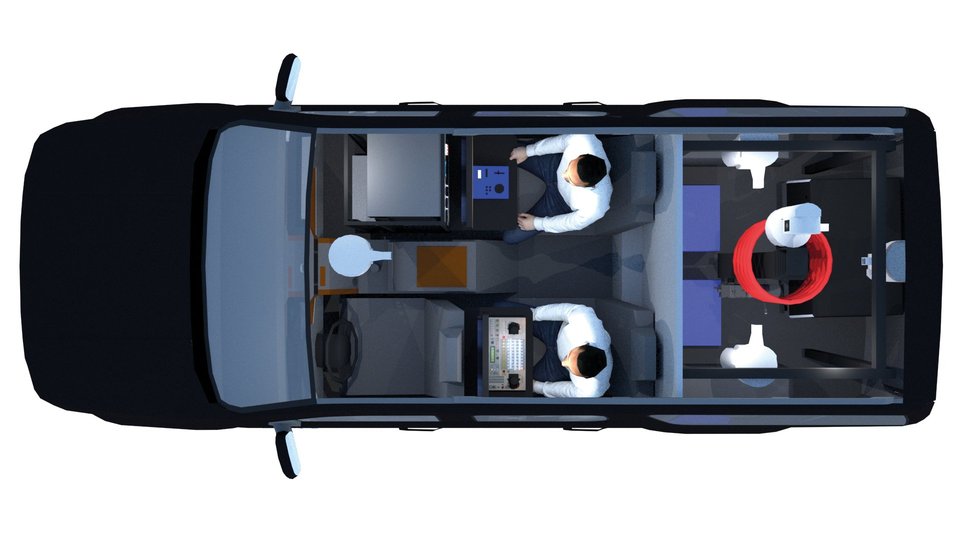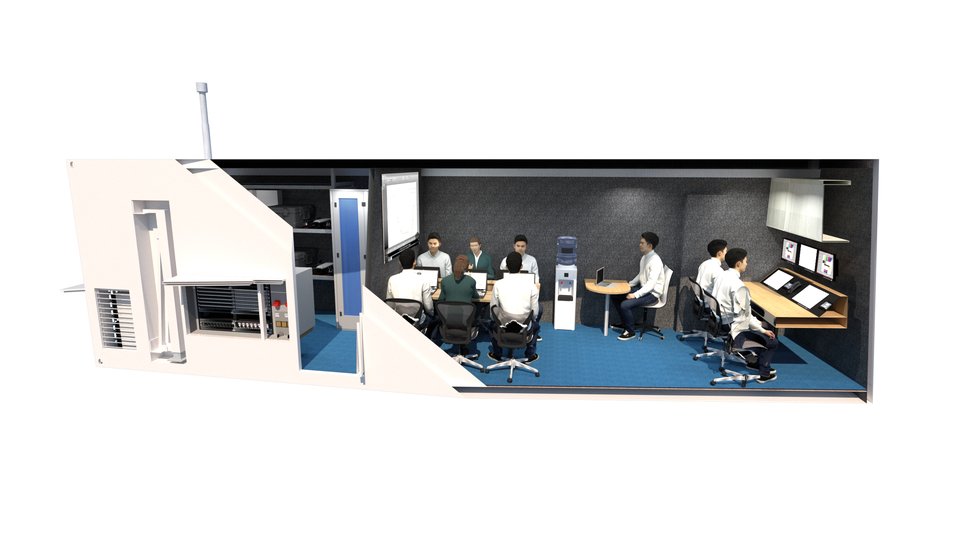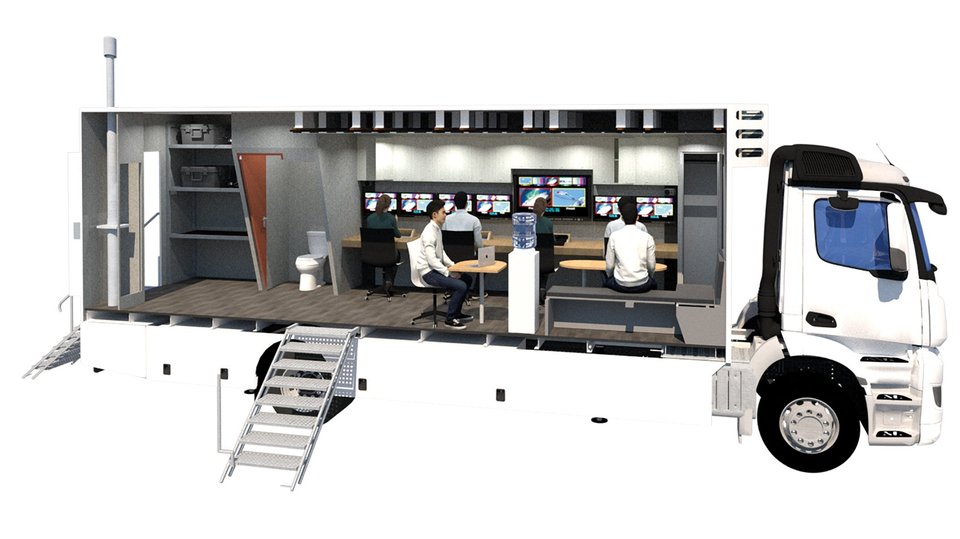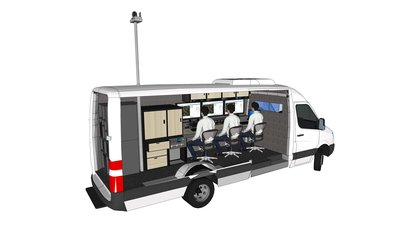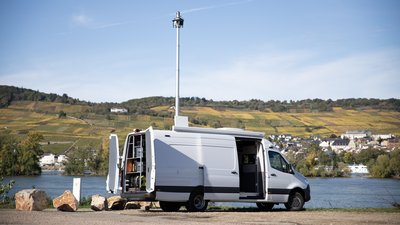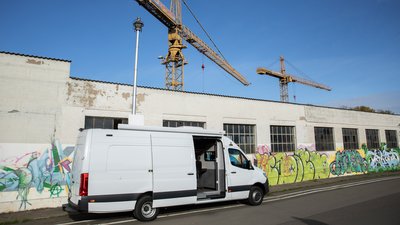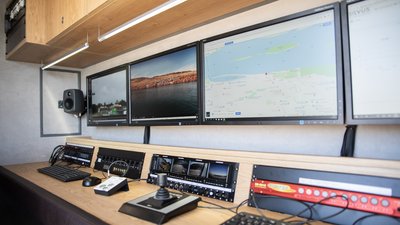The design, grade of mobility and available functionalities of the MoSA platforms can vary depending on the on the situation, operation and number of team members working on site and from remote. To cover as much scenarios as possible and to have the best solution at hand, Broadcast Solutions has developed a family of MoSA platforms. They range from case-based ruggedized on-the-go solutions for communication and power supply in the field, and span several mobile, vehicle based MoSA platforms, offering mobile facilities for teams starting with two persons up to large outdoor operation centres that can accommodate up to 20 persons. With these MoSA platforms users can deploy a large variety of Mobile Situation Awareness Solutions to facilitate the deployment of tactical communication systems, in any situation conceivable.
Be it tactical deployments for security organisations, emergency operations for government services or maintenance procedures for industrial facilities, all require situational awareness in the field. Such ad hoc implementations have similar requirements: get to location; set-up cameras and sensors; enable real-time communications with field-operators; analyse incoming data and video feeds; backhaul resulting information to a central command and control centre or remote operator.
Counter UAS Solutions
The sales of drones worldwide is increasing in a dramatic speed, so are the number of incidents. Counter measures rapidly become a necessity, providing true mobility for deployment is our contribution.
A million commercial drones will be sold worldwide this year. These Unmanned Aerial Vehicles (UAV) have moved beyond aviation hobbyists and dramatically changed monitoring, distribution, and even industrial applications. A side effect of this boom is that drones have become a rapidly expanding threat to public safety. These past years have demonstrated the ease with which consumer drones can deliver airborne improvised explosive devices (ABIED).
The resulting challenge for security organisations is deploying counter-drone solutions to protect public events and secure the adjoining airspace. Referred to as Counter UAS (or C-UAS), these solutions seek to neutralise the threat by disrupting the Unmanned Aerial System that combines the drone, its associated ground control station and the RF link connecting these two. Such products typically combine small aperture radars to detect flying objects, an EO/IR sensor or camera to track the unidentified flying object, and the software required to drive the platform. A high-powered jammer is often used as a soft kill option.
Facilitating such systems' deployment falls within the scope of Broadcast Solutions Mobile Situational Awareness (MoSA) platforms. A new range of MoSA vehicles has been developed in partnership with several C-UAS manufacturers. These platforms streamline ad hoc deployments in the field and ensure their integration with existing command networks. Securing an area only requires driving the MoSA C-UAS to location and deploying the on-board counter drone system – an operation that can be boiled down to a few minutes.
Digital technology changes the area of operations
Until recently, the deployment of such systems remained limited. Available solutions were too costly to implement or too cumbersome to deploy. Transmissions were often limited to voice, text data and basic telemetry. Today, the playing field has changed. Breakthroughs in transmission and video encoding allow for a new generation of MoSA platforms.
Simple Accordion
Mesh IP radio technology provides the path for highbandwidth, resilient transmissions in the field. It combines the best in radio technology (COFDM, MIMO antennas) with mesh network topology. In such a wireless mesh network, each radio is a node that simultaneously plays the role of transmitter, receiver and repeater. Nodes connect directly, dynamically and non-hierarchically to as many other nodes as possible and cooperate to efficiently route data across the resulting network.
Instead of the few dozen kilobits of bandwidth supported by legacy systems, the resulting mesh IP radio network provides dozens of megabits. This thousandfold increase powers full-duplex IP networks that enable voice, data and even video communications. Combined with recent advances in coding and decoding algorithms (CODEC), such networks support the transmission of high-quality and even broadcast quality HD and 4K streams. Technologies such as MPEG-4 and HEVC allow for the delivery of full resolution video at 24 frames or more per second.
Tactical deployments call for integrated platforms
These new transmission and video technologies allow for the design of next generation MoSA platforms. Their successful implementation relies on the capability to streamline energy distribution in the field to power networked devices; the need for software applications to exploit the resulting data; the ability to backhaul that data to a centralised command centre or remote user.
Simple Accordion
Silvus Technologies body-worn radios use Twist-Lock batteries which are also used to power connected sensors such as Point-of-View (PoV) cameras or Wi-Fi routers. MoSA vehicles embed alternative power sources, adequate current distribution and an array of rechargers to accelerate the on-board energy transfer to these swappable field batteries. In addition, Broadcast Solutions MoSA tactical kits offer mobile energy sources in Pelican-case format to streamline the deployment of Pan–Tilt–Zoom (PTZ) cameras and computer equipment in the field.
Beyond logistical support, MoSA vehicles typically incorporate a compact command, control, communications and computers (C4) suite. To that effect, the MoSA-M4 offers a C4 for three to four operators. Its digital intercom system facilitates communications with field units. Its integrated Video Management System (VMS) takes advantage of on-board computers and networking equipment to provide real-time monitoring, recording and analysis of feeds from the area of operations. It can be combined with Geographic Information Systems (GIS) to provide further intelligence to operators on-board the vehicle or dispatched in the field of operations.
Such integration becomes all the more relevant when a backhaul to a remote data centre or central command and control is ensured. To that effect, all Broadcast Solutions MoSA platforms cater for a variety of remote communications equipment. The standard bonded cellular connection can be complemented with a bi-directional satellite link. Depending on operational requirements, such a satellite terminal can support static or on-the-move transmissions to a variety of networks-both civilian Ku- and Ka-bands as well as military X-band.
A rich range of options
MoSA platforms come with a variety of options to address the specifics of any tactical environment, including:
- A wide range of cameras and field-sensors to address mission requirements
- Directional antennas and boosted amplifiers for ultra-long-range transmissions
- Drones and tethered blimps for optimised perimeter surveillance
- Ruggedised tablets for field personnel
- Data encryption and cybersecurity
- and more

![[Translate to English:] [Translate to English:]](/fileadmin/_processed_/c/f/csm_4-5O6A6781_f4dfae7a09.jpg)
